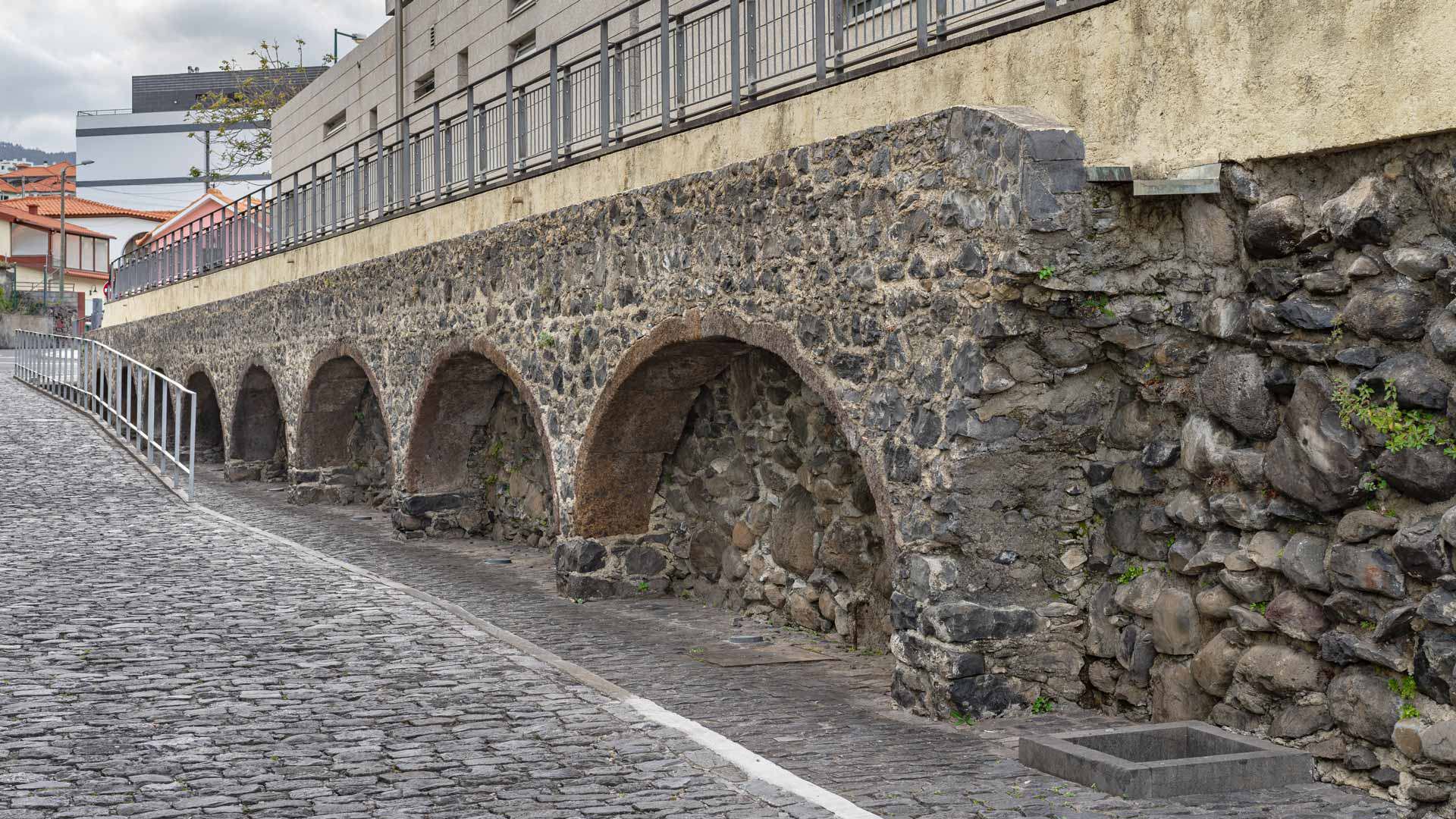Classified as Property of Municipal Interest, the Machico Aqueduct is an unavoidable historical landmark of the municipality. It is one of the main symbols of utilitarian and industrial architecture in this city on Madeira's east coast.
This structure was built in the 19th century, between Caminho do Engenho and Rua da Estacada. At that time, it was designed to fulfil a very specific purpose: supply water to the old sugar cane mill in Machico. In this regard, it should be noted that, since the 16th century, Madeira has established itself as one of the most famous sugar producers in the world, and sugar was then known as 'white gold'.
From the initial fourteen arches of the Machico Aqueduct, only eight remain. These arches, in red stonework from Caniçal, have large spans - four metres and forty centimetres wide - leaning against the protective wall of Ribeira de Machico.
The Machico Aqueduct was built using rustic basalt masonry, plastered with lime mortar. In addition, its channel, or 'levada', is made of stone masonry and lime. In 2001, this century-old building was turned into a museum, according to a conservation project designed by architect Victor Mestre.
The Machico Aqueduct, a symbol of the region's Industrial Architecture, was built in the 19th century to supply water to the city's old sugar cane mill.

